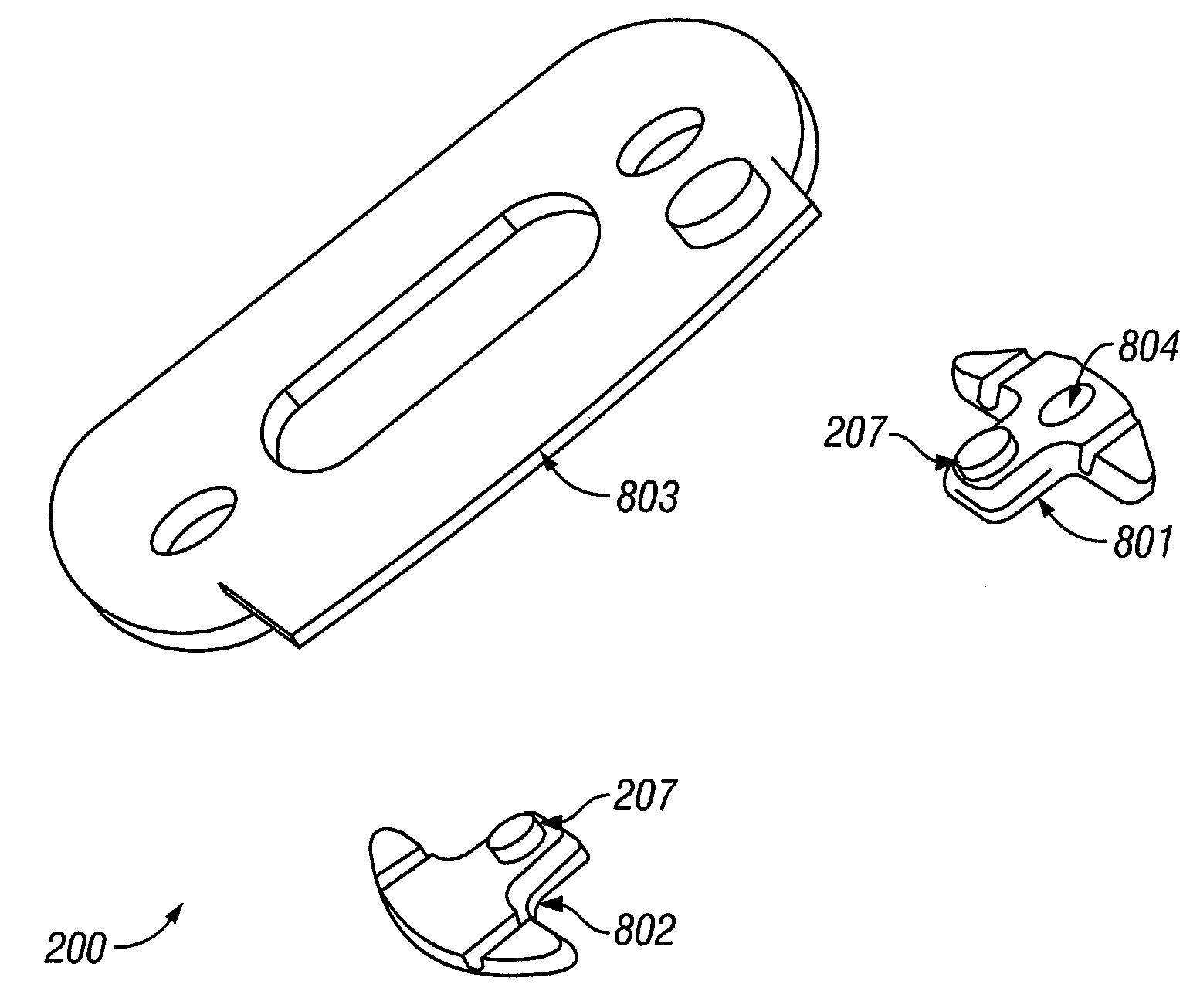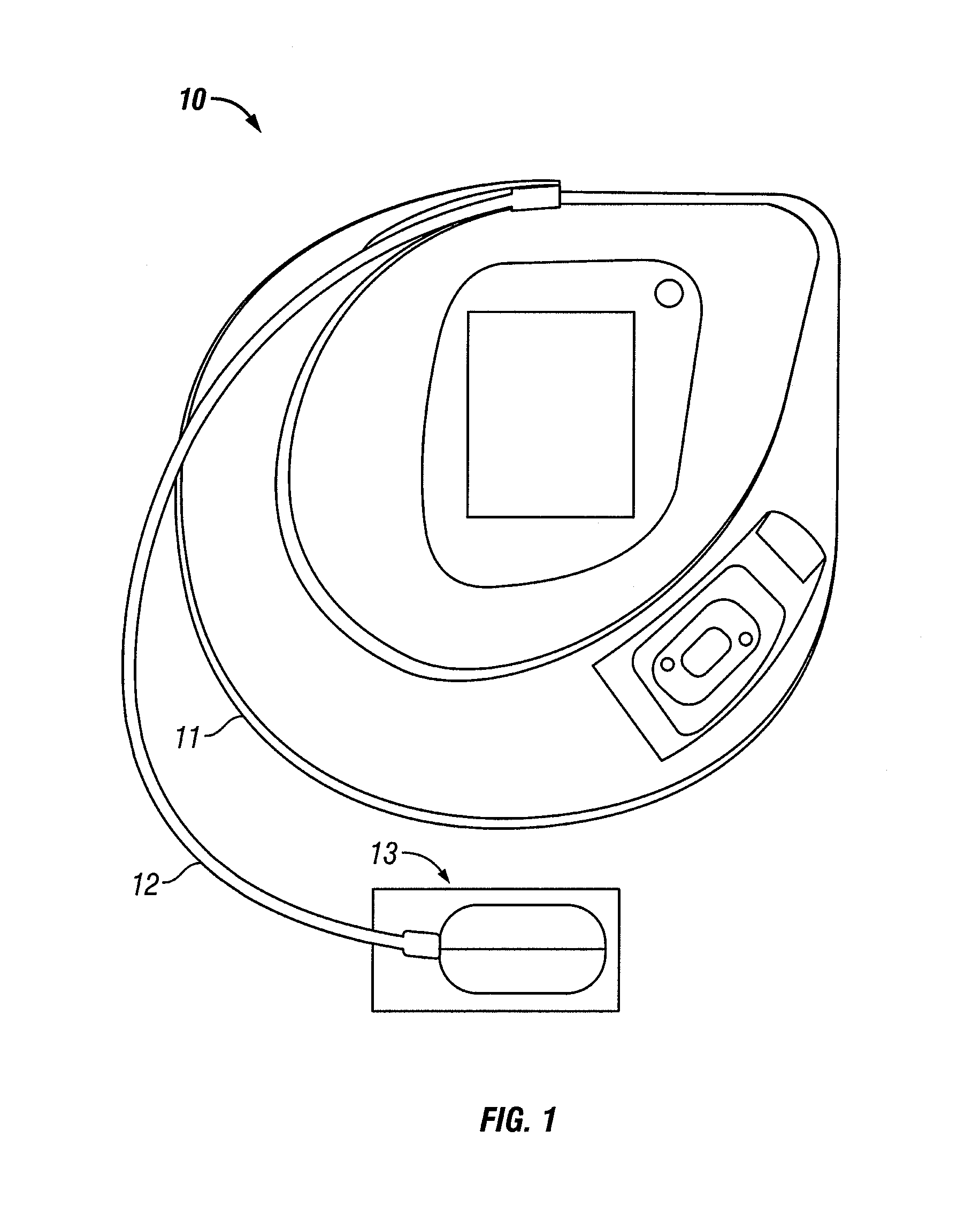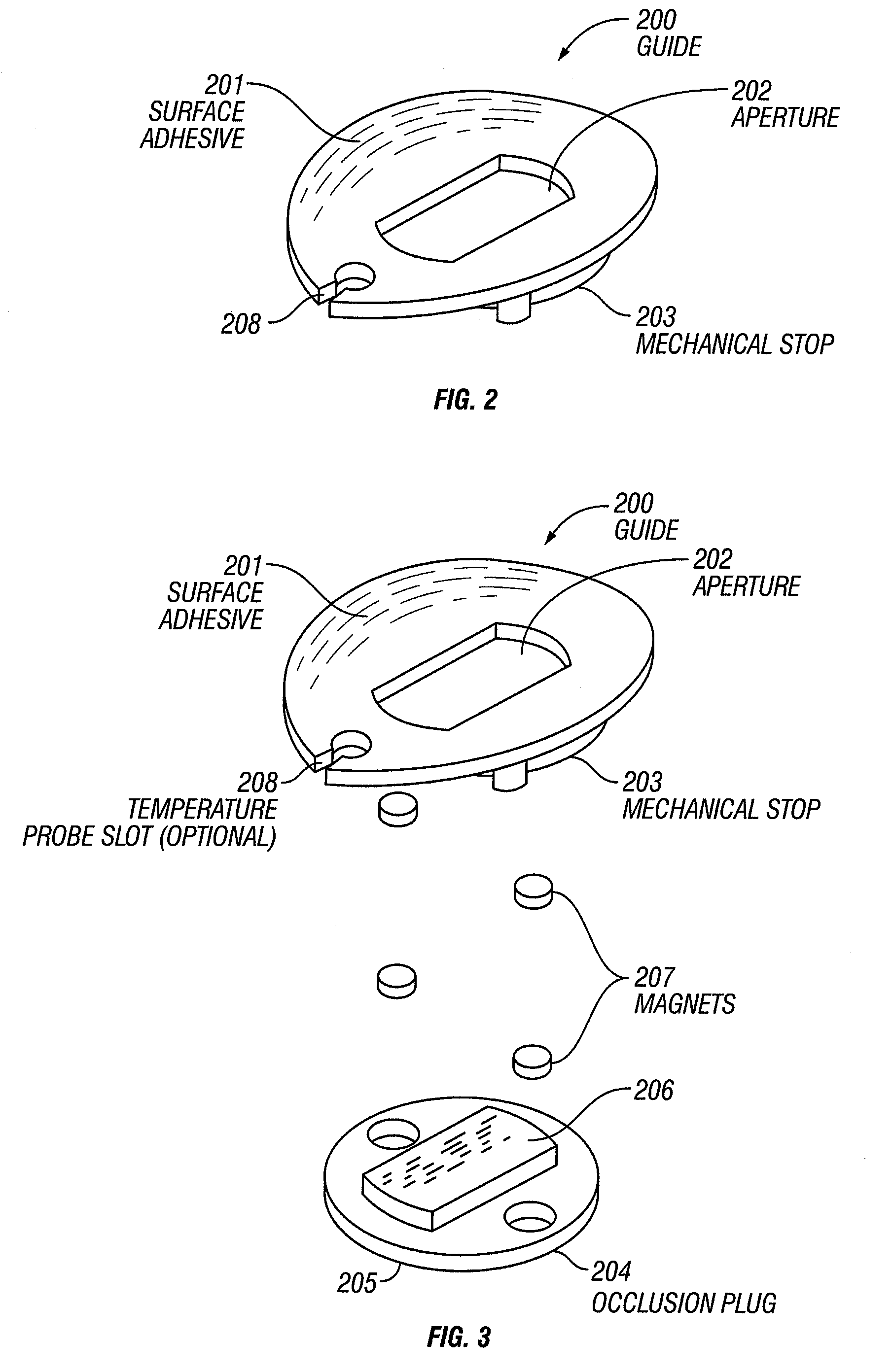Optical sampling interface system for in-vivo measurement of tissue
a tissue and optical sampling technology, applied in the field of optical sampling interface systems, can solve the problems of the degree of optical sampling reproducibility, the abnormal production and use of insulin, and the leading cause of death and disability worldwide, and achieve the effect of reducing sampling variation and/or state fluctuations, and increasing precision and accuracy
- Summary
- Abstract
- Description
- Claims
- Application Information
AI Technical Summary
Benefits of technology
Problems solved by technology
Method used
Image
Examples
example i
[0142]Referring now to FIG. 9, a guide 200 with a first alignment piece 801 and a separate second alignment piece 802 is presented. In this example, the first alignment piece contains an optional magnet 901 that registers at least the x-, y-, and z-position of the sample probe. The second alignment piece also contains an optional magnet 902 and is used to register at least the y- and z-position of the sample probe. Together the first and second alignment pieces 801, 802 control the rotation of the corresponding sample probe relative to the guide and hence control the position of the sample probe relative to the sample tissue.
[0143]The first and second alignment pieces 801, 802 are optionally attached directly to a tissue sample site or a region about the sample site, as described supra. In another instance, one or more intermediate layers are placed between the first and second alignment pieces 801, 802 and the tissue sample.
[0144]Referring now to FIG. 10, a first layer 1001 is plac...
example ii
[0150]Referring now to FIG. 13, a guide 200 comprised of two separate alignment pieces 801, 802 is presented. In this example, each of the two alignment pieces contains wings 1301. The wings are attached to the alignment pieces with a flexible material 1302, such as a living hinge. The living hinge compensates for changes in at least one of shape, weight, and applied pressure. In this example, means for alignment of at least one of an x-position, y-position, z-position, and rotational position are provided jointly by the two alignment pieces and / or separately be each of the alignment pieces.
Z-Axis Movable Guide
[0151]In an additional embodiment, rotation of the sample probe is controlled by the guide while allowing z-axis movement of the guide.
[0152]Referring now to FIGS. 14a and 14b, a schematic presentation of sample probe control and sample probe movement relative to a sample is presented. The sample module 103 includes a sample probe 1403. A controller 1401 controls an actuator 1...
example 1
[0200]A study was performed to examine the difference in spectral variation between several different near-infrared sampling treatments on a single subject. Near-infrared spectra were collected using a custom built scanning near-infrared spectrometer that collected intensity spectra in diffuse reflectance over the wavelength range 1100-1950 nm. The spectral sampling interval was one nanometer and the signal-to-noise ratio at the peak intensity was approximately 90 dB. The detector used in the study was Indium-Gallium-Arsenide (InGaAs) and the optical configuration consisted of a simple fiber optic interface to the skin with a small (<2 mm) distance between the illumination and detection fibers. Reference spectra were recorded before each sample measurement by scanning a 99% SPECTRALON reflectance material provided by LABSPHERE of North Sutton, N.H. The absorbance spectrum was calculated through Equation (2), supra.
[0201]Approximately twenty near-infrared absorbance spectra were coll...
PUM
| Property | Measurement | Unit |
|---|---|---|
| wavelength range | aaaaa | aaaaa |
| concentration | aaaaa | aaaaa |
| thick | aaaaa | aaaaa |
Abstract
Description
Claims
Application Information
 Login to View More
Login to View More - R&D
- Intellectual Property
- Life Sciences
- Materials
- Tech Scout
- Unparalleled Data Quality
- Higher Quality Content
- 60% Fewer Hallucinations
Browse by: Latest US Patents, China's latest patents, Technical Efficacy Thesaurus, Application Domain, Technology Topic, Popular Technical Reports.
© 2025 PatSnap. All rights reserved.Legal|Privacy policy|Modern Slavery Act Transparency Statement|Sitemap|About US| Contact US: help@patsnap.com



